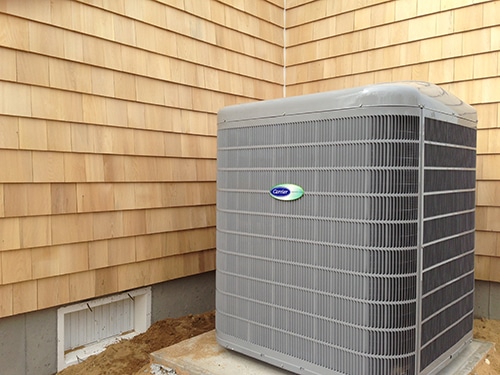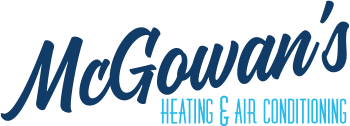
Your air conditioner works hard to distribute cool air throughout your Jacksonville home. Sometimes, though, your air conditioner may start sending out mold spores along with the cool air it’s designed to send out. Since these mold spores can be harmful to your health and home, it’s important to tackle the root cause of the problem as soon as possible. Understanding what’s causing the mold growth in your air conditioner can help you attack it more quickly so it doesn’t cause chronic issues. When addressing mold in customers’ air conditioners, here are a few things that the pros at McGowan's Heating & Air Conditioning have found to be helpful.
Risks of Mold Growth
A small amount of mold in your home isn’t likely to cause negative health effects. However, mold grows and spreads quickly, amplifying its effects in the process. The most common problem associated with mold growth is allergy symptoms, including sneezing, watery eyes, and coughing. Some types of mold can even cause insomnia, memory loss, trouble concentrating, depression, and more, especially if you are exposed to the mold over a long period of time. Furthermore, if mold is allowed to grow on certain materials, it can damage those materials to the point that they have to be replaced. That’s why McGowan's Heating & Air Conditioning recommends doing all you can to tackle mold problems quickly and completely.
How Mold Growth Begins
The biggest contributing factor to mold growth is unabated moisture. In other words, if a surface stays moist with stagnant water, mold can grow. The other necessary ingredient for mold growth is some type of organic material. In a home, this can come in the form of wood, carpet fibers or other building materials. It can also feed on organic matter like skin cells or hair that are contained in dust. This means that if you have any poorly ventilated areas in your HVAC system, mold can take root and quickly begin to take over. Furthermore, since mold spores spread by floating through the air, they can quickly spread and reproduce in the windy environment of an air conditioner and its ducts.
Mold in Condensate Pan and Drain
When your air conditioner is running, it is constantly pulling moisture out of the air to make the air feel more comfortable. This moisture, called condensate, falls from the evaporator coils into the condensate pan. When the condensate pan is full, the excess condensate drains out of the air conditioner through the condensate drain, and then either into the sump well or outside your home. Sometimes, the condensate drain can become clogged with debris, preventing the condensate from evacuating the air conditioner properly, meaning mold can grow in both the drain and pan. The easiest way to clean the condensate drain and keep it flowing is to pour a small amount of bleach down the drain every few months. The bleach also helps to prevent mold growth, making this a good habit to get into.
Mold in Evaporator Coil
As cold refrigerant flows through the copper pipe that makes up the evaporator coil, the exterior of the pipe also becomes quite cold. Then, when humid air flows past this cold pipe, the humidity condenses on the pipe. Since this process quickly creates a moist environment, there is a constant risk of mold growth on the evaporator coil. The good news is that the copper pipe that makes up the evaporator coil isn’t made of organic material, meaning that mold can’t feed on the pipe itself. Unfortunately, dust that collects on the evaporator coil often contains organic material, creating the conditions necessary for mold growth. If there’s too much dust on the evaporator coil, it can also reduce the performance of your air conditioner. To avoid damage to your air conditioner, it’s best to have McGowan's Heating & Air Conditioning clean your evaporator coil rather than trying to do it yourself.
Mold in Ducts
Another common place for mold growth in an HVAC system is the ducts that send conditioned air throughout your home. Similar to the evaporator coil, the metal ducts themselves are not an organic material that mold can feed on. However, dust often collects in ducts, and this dust provides an ideal environment for mold growth. Mold that’s growing in your ducts can quickly spread throughout your home as the conditioned air flows through the ducts, meaning you’ll want to address this issue quickly. The best way to remove the mold that’s growing and prevent future mold growth is to have McGowan's Heating & Air Conditioning clean your ducts. A good rule of thumb is to have your ducts cleaned every five years. Of course, if your home is exceptionally dusty, you may need to shorten this timeframe.
Mold on Vents
Mold that’s growing on vents can be unsightly and unhealthy. As conditioned air passes through the vents, it can pick up mold spores from the vents and spread them throughout your home. In most cases, if you have mold growing on your home’s vents, it means you also have mold growing in the ducts. Either way, when mold is growing on vents, it often indicates that the air in your home is too humid. As the humid air circulates around the vents, it provides one ingredient for mold to grow. The other ingredient is often present on the vent surface in the form of latex paint. If the vents have ever been painted, it provides a prime environment for mold growth. To solve this problem, you can replace the vents. The paint that comes on vents from the factory tends not to be conducive to mold growth.
Precautions To Take When Cleaning Mold
If you notice mold growth in or around your air conditioner, McGowan's Heating & Air Conditioning recommends shutting it off until you can clean the mold. This will help prevent any mold spores from circulating around your home. If you choose to clean the mold yourself, make sure to wear thick rubber gloves to prevent exposing your skin to mold spores. Also, it’s vital to wear a face mask or respirator so that you don’t breathe in loose mold spores. Do your best only to disturb the mold spores as much as necessary so that you don’t release them into your home and allow them to grow elsewhere. Bleach is a good cleaner to use to kill the mold and clean the surfaces where the mold is growing. Be sure to use caution when handling bleach, and only use it in a well-ventilated area.
Keeping You and Your Family Safe and Healthy
At McGowan's Heating & Air Conditioning, our main concern is keeping you and your family safe and healthy. To help with this, we offer mold remediation for air conditioners, furnace repairs, and HVAC system replacements. We also offer air duct cleaning, attic insulation installation, new home HVAC installation, and much more. For over 45 years, we’ve been serving the Jacksonville community with top-notch service and exceptional integrity. Our commitment to excellence and our competitive prices are two reasons why we consistently earn five-star customer reviews. To learn more about preventing mold growth in your air conditioner, contact us at McGowan's Heating & Air Conditioning today.



